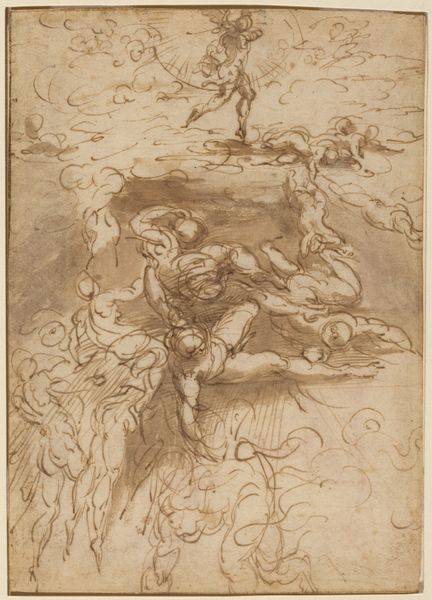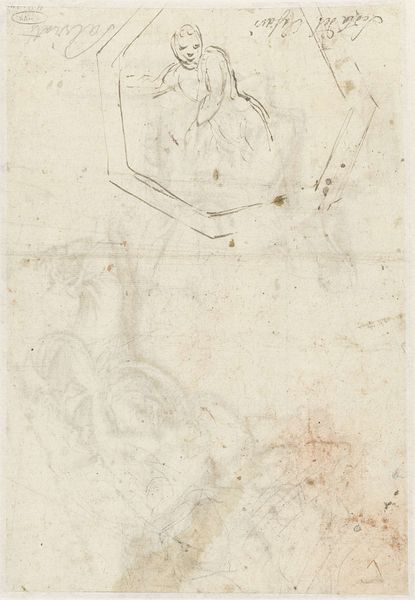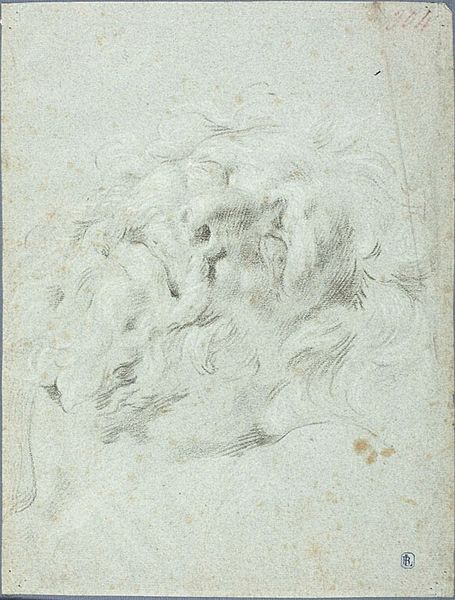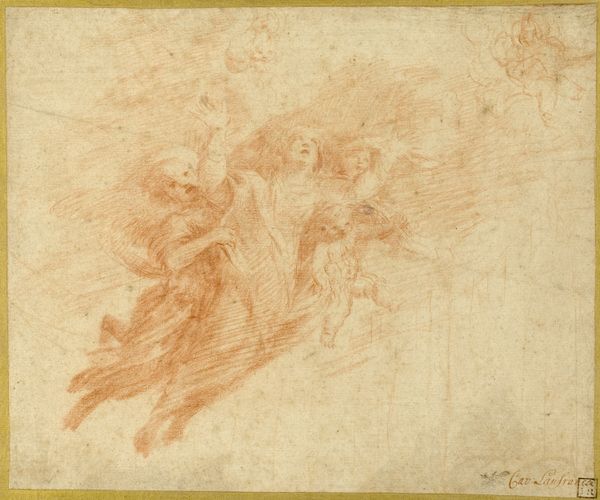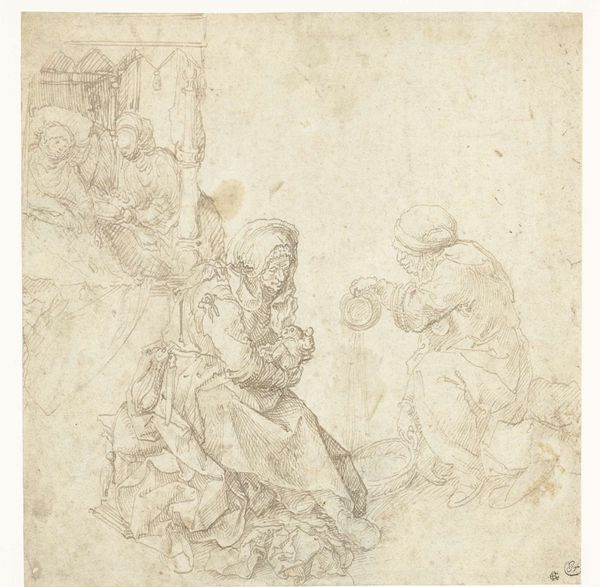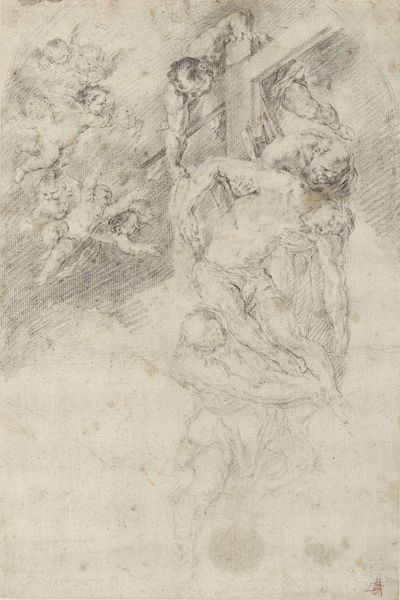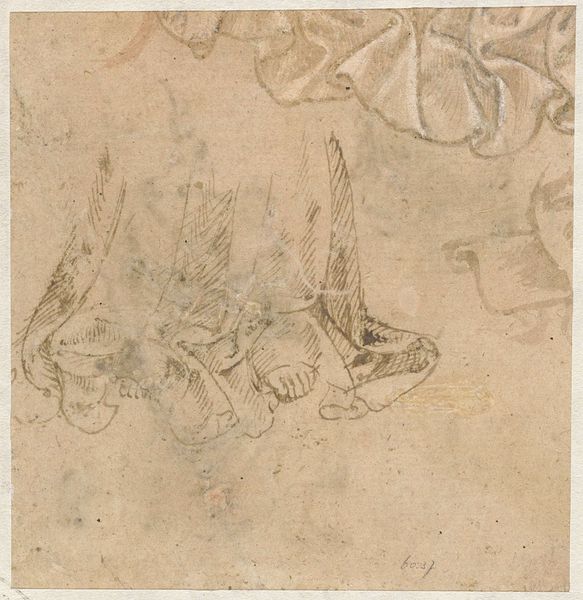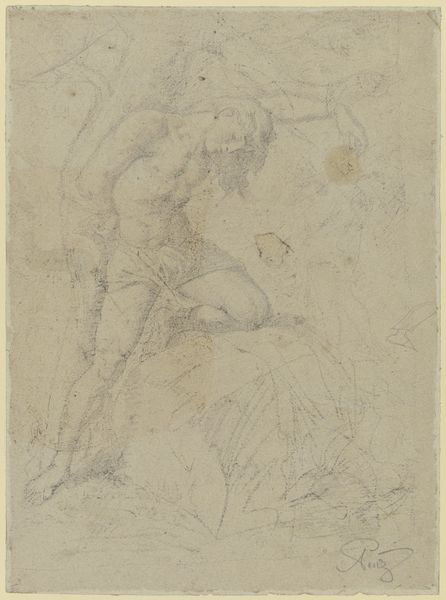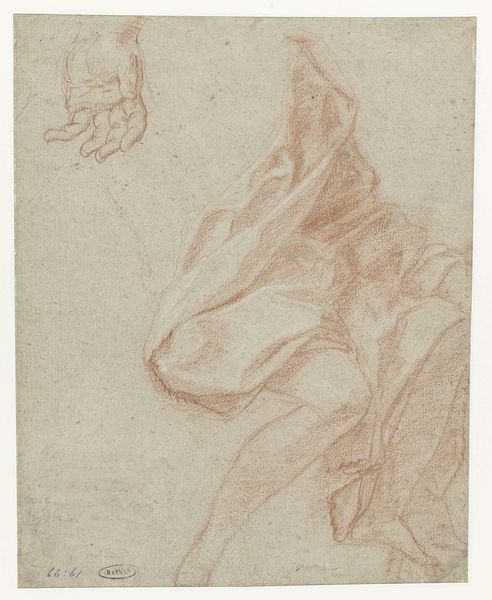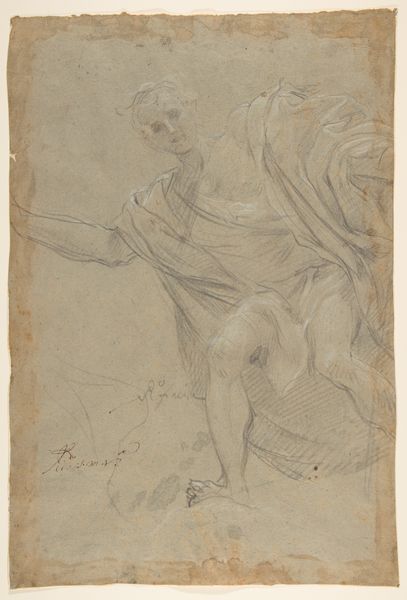
drawing, pencil
#
portrait
#
drawing
#
pencil sketch
#
etching
#
figuration
#
11_renaissance
#
pencil
#
italian-renaissance
Dimensions: height 130 mm, width 104 mm
Copyright: Rijks Museum: Open Domain
Curator: Looking at this piece, the cluster of heads is almost unsettling; it gives an immediate feeling of compressed energy. Editor: Indeed. Today we’re observing Parmigianino's "Four Heads of Men One Behind the Other," created sometime between 1513 and 1540, here at the Rijksmuseum. It's a drawing, using primarily pencil as its medium. Curator: What fascinates me is how the overlapping creates a sense of a collective unconscious, or maybe even past lives bleeding into one another. You have the clear profile at the top and then the dense knot of the group; a study in both individuality and unity, a shared soul, perhaps. Editor: And the material choice! Consider the accessibility of pencil in that period – a tool becoming increasingly available, allowing for relatively quick sketches, copies, and studies. Was this possibly part of a larger preparatory effort, exploring figure arrangement and emotion prior to a larger commission? The texture created, with its hatching and cross-hatching, speaks to its preliminary purpose, too. Curator: That’s interesting. I keep coming back to how the faces, though seemingly different, all possess this haunting, almost melancholic gaze, maybe suggestive of a singular pained figure viewed from different angles or psychological perspectives. The Renaissance obsession with ideal forms rendered through visible emotion. Editor: And that access to more affordable, versatile materials shaped a different relationship to artistic labor. This sketch highlights artistic practice – experimentation and material possibility intertwined, influencing accessibility and thus broader consumption of art and image-making practices. Curator: Ultimately, it is this sense of ghostly connection between the figures that leaves me pondering the nature of human identity and the weight of our shared history, passed from face to face. Editor: Right – It underscores art’s move toward preliminary, process-oriented, tangible works of the hand which speak to a different socioeconomic terrain and the conditions under which this piece might have come into existence. A reminder to consider the making, the materials, and the socio-economic forces involved!
Comments
No comments
Be the first to comment and join the conversation on the ultimate creative platform.
